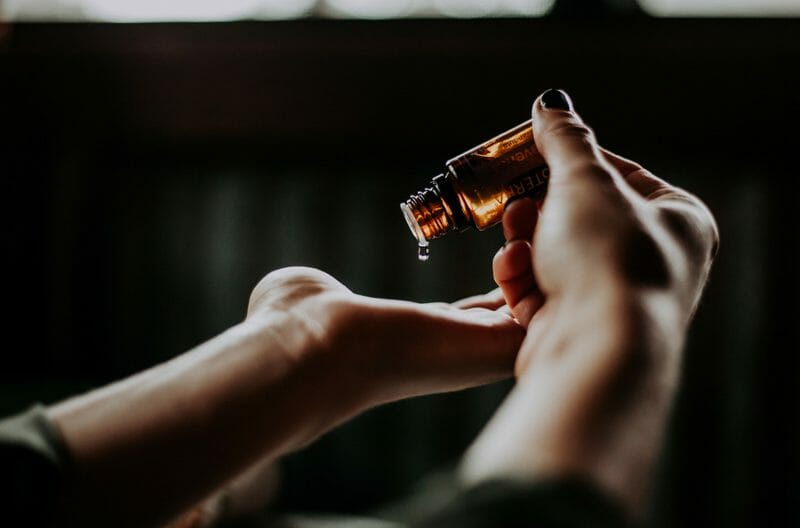Why Should You Care and What is Tea Tree Oil?
What’s tea tree oil, anyhow? If you’ve been asking this question, this guide is for you! We will get detailed about the top tea tree oil benefits, where you are able to buy pure tea tree oil, how to use it, and much more. You’ll learn important safety tips including how to dilute it and information about potential side effects as well. In summary, everything you might possibly need to learn about this wonderful oil!
Pure tea tree oil contains many beneficial compounds that are fantastic for skin, hair, nails and much more. Additionally, the oil has a beautiful aroma to it that works well in aromatherapy applications!
When it comes to the most important tea tree oil benefits, here’s what we’re going to cover:
- Skin
- Hair
- Nails
- Body
- At Home
With this in mind, let’s dig into the specifics of this wondrous little essential oil.
Page Contents…
- 1 What is Tea Tree Oil Made From?
- 2 What is Tea Tree Oil Good For?
- 3 Where to Buy Tea Tree Oil
- 4 How to Dilute Pure Tea Tree Oil
- 5 Tea Tree Oil Side Effects
- 6 Start Harnessing These Tea Tree Oil Benefits for Yourself
- 7 References
What is Tea Tree Oil Made From?

So, what is tea tree oil made from? Tea tree oil is derived from an Australian plant with the scientific name Melaleuca alternifolia. Manufacturers extract the plant’s oil using steam. In essence, it is well documented as an anti-fungal and antibacterial oil.[1] Many oils that we use in and on our bodies are a lot older than tea tree oil since it has only been around for the last 100 years.[2] In the grand scheme of natural remedies, tea tree oil is still in its infancy, overall.
What is Tea Tree Oil Good For?
Now that you know more about what tea tree oil is, you probably want to know, “What is tea tree oil good for?” To sum up, a lot of things! Tea tree oil benefits many parts of our body including hair, nails, skin, and more! Here’s a summary of the top tea tree oil benefits:
Tea tree oil benefits for skin
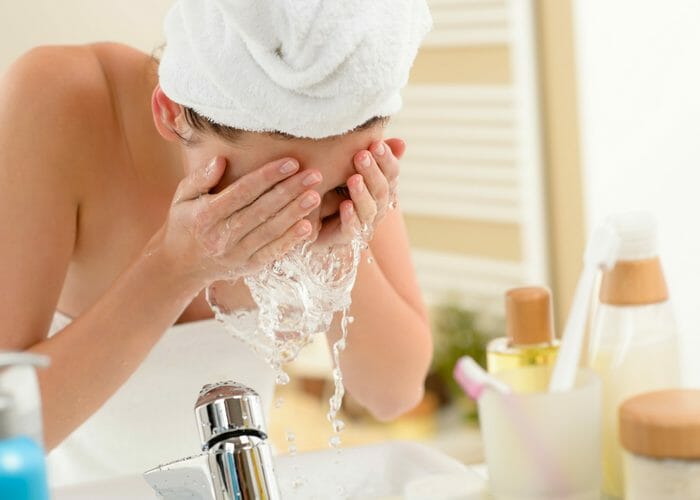
When using tea tree oil for your skin, you’ll probably feel a menthol-like cooling sensation. Its soothing properties can heal wounds, prevent scarring, and clear up acne. So, what is tea tree oil good for when it comes to your skin? Here are a few applications:
- Acne – Some of the compounds in pure tea tree oil have been shown specifically to fight the bacteria that causes acne. Over-the-counter medicines that contain benzoyl peroxide (there are a lot!) tend to dry out the skin. The harsh chemicals in those products can cause reddened skin and even peeling. You shouldn’t have to choose between acne and peeling skin. Using tea tree oil for skin is a natural, effective way to clear up problem areas without those nasty side effects.
- Scars – Tea tree oil for skin could possibly reduce the appearance of scars. Although more experimentation is needed, at least one study has shown that tea tree oil can reduce the appearance of scar tissue by speeding wound healing. For example, if you burn your hand, using a tea tree oil topical mixture can soothe and reduce possible scarring.[3] To treat yourself at home, try mixing one drop of pure tea tree oil with 1 ½ teaspoons of raw honey. Let this mixture sit on the scar for at least 15 minutes or until it dries. Doing this once a day will begin to lighten scars.[4]
- Wounds – Tea tree oil benefits for skin certainly don’t stop there. You can actually use this essential oil to treat wounds. Tea tree oil contains healing properties that enhance the growth of white blood cells. This is how our bodies heal wounds. Not only does it promote healing, but it also speeds up the recovery process.[5]
- Itches – Have you ever had an itch that you literally just couldn’t scratch? Keep some tea tree oil around the house, and you’ll never have that problem again. As a matter of fact, this oil can magically (okay, scientifically) soothe itchy, irritated skin. Whether it is a bug bite, chickenpox, or another itchy skin condition, pure tea tree oil can reduce inflammation and swelling.[6] For fast relief, use a few drops of tea tree oil combined with a soothing lotion or oil (like coconut oil or shea butter) and rub it into your skin. It should instantly provide itch relief.
Tea tree oil benefits for hair

Now that you know about the top tea tree oil benefits for skin, you may be wondering what is tea tree oil besides a skin revitalizer and wound healer? It’s also great for your hair! Here are the top tea tree oil benefits for hair:
- Dandruff – Get rid of dandruff once and for all. Dandruff can plague your lustrous locks for a variety of reasons—oily skin, infrequent shampooing, fungus, dry skin, and even skin sensitivity. One of the top tea tree oil benefits for hair is ridding yourself of those pesky flakes by improving your scalp condition. In fact, a 2002 study proved that, when applied directly to the scalp, a 5% tea tree oil concentration provided a 40% improvement in dandruff symptoms. On top of that, there were no nasty side effects.[7]
- Hair growth – If you have ever wished you could snap your fingers and grow hair like Rapunzel, you definitely need to buy some pure tea tree oil. Because tea tree oil benefits include antimicrobial properties, it can naturally promote hair growth. The oil helps unblock hair follicles and nourish hair at the root. When hair is improperly nourished and/or cleaned, the scalp can become itchy, dry, and flaky. Ultimately, by using tea tree oil directly on your scalp, you’ll be taking care of your hair from the inside out. Just like the tea tree oil concoction made to soothe itchy skin, the same tonic will clean your scalp and promote hair growth. Additionally, a few drops of the oil added into coconut oil and applied to the scalp will give you the benefits of silky hair and long locks.
Tea tree oil benefits for nails
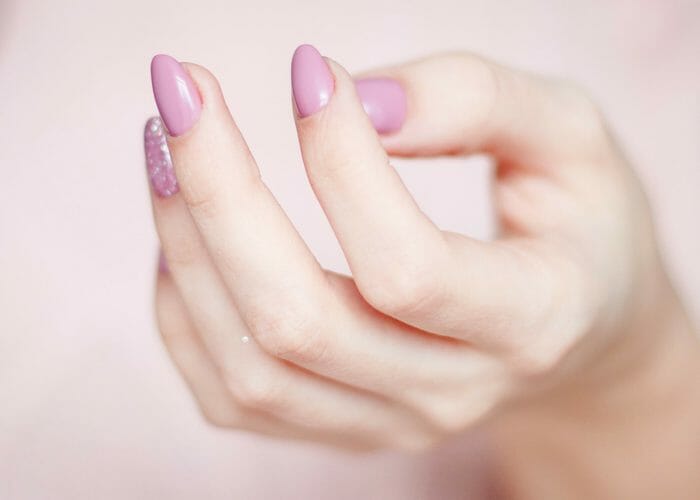
What is tea tree oil good for if we can’t use it everywhere? Because tea tree oil is filled with antifungal components, it’s great for hair, skin, and nails. Here are the top tea tree oil benefits for your nails:
- Athlete’s Foot – While not exactly part of your (toe) nails, pure tea tree oil is wonderful for curing athlete’s foot. In medical circles and in most studies, athlete’s foot is also called tinea pedis. A 10% tea tree oil crème has been shown to achieve effective relief from itching and cracked skin.[8]
- Nail fungus – If you have ever had athlete’s foot, you may have also had nail fungus, either on your toes or your fingers. Again, tea tree oil is beneficial in fungal infections. Therefore, using a cotton ball soaked in pure tea tree oil and then rubbed on nails (or in between toes) will help treat fungus and alleviate any uncomfortable symptoms.
Tea tree oil benefits for the body
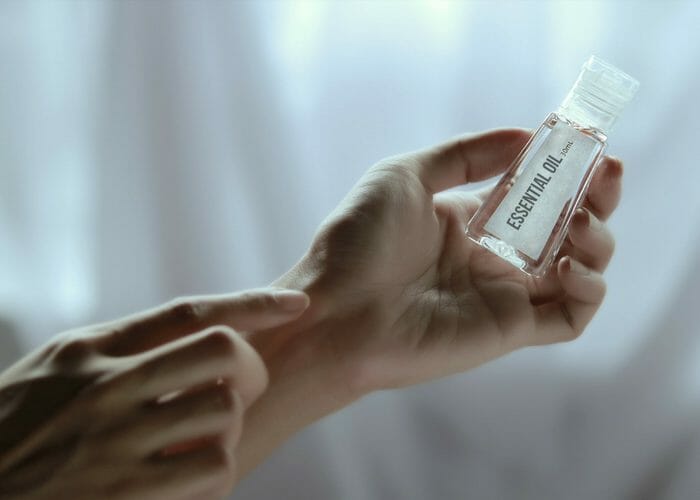
When we ask what is tea tree oil and what are its benefits, we certainly cannot leave out one of the biggest ways it can help us. What we put into our bodies is equally as important as what we put on our bodies. Using pure tea tree oil can aid in healing infections, resolving bad breath, and may even help you avoid antibiotic resistance. Here are the top tea tree oil benefits for your body:
- Bad breath – Bad breath has plagued us all at one point or another. Tea tree oil helps combat bad breath with its antibacterial properties. We get yucky breath because all the bacteria that can be found on our tongues, our gums, and our tonsils. You don’t ever want to ingest pure tea tree oil, but you can use a few drops in mouthwash and then spit it right out. Basically, it will keep your breath fresher for longer, especially if used daily.
- Infections – Tea tree oil is great for healing infections. Again, those wonderful antibacterial properties give this oil the ability to fight respiratory infections, soothe and treat sore throats, and prevent coughing. Because it helps fight bacterial infections and respiratory issues, keeping tea tree oil in your medicine cabinet is a good idea.[9]
- Natural resistance development – Antibiotic resistance can sometimes put you at a disadvantage after a doctor’s visit. That’s why essential oils like tea tree oil are such a positive force for healing and prevention. For now, scientists have been experimenting with all kinds of new antimicrobial compounds to reduce the occurrence of antibiotic resistance. In reality, tea tree oil is the perfect compound for resistance development because of its natural antibacterial and antimicrobial agents.[10]
Tea tree oil benefits for the home
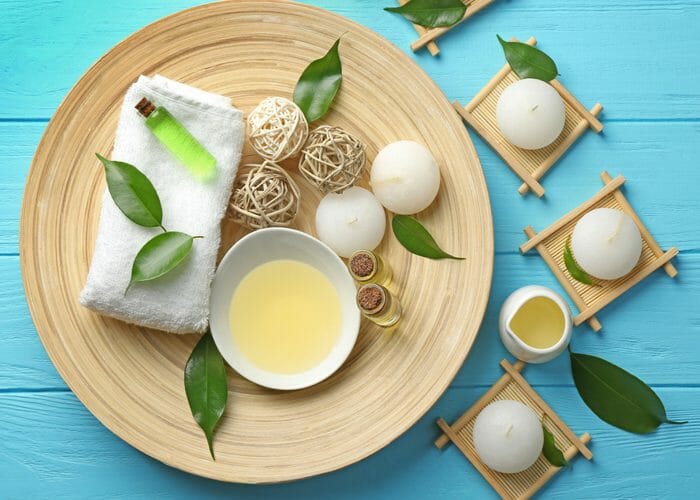
So far, we’ve covered tea tree oil for skin, for hair, for nails, and even for fresh breath. If you’re wondering “what is tea tree oil going to do for my home,” we’ve got you covered. Let’s look at housecleaning products using pure tea tree oil. As a matter of fact, we’re always looking for ways to make cleaning easier and natural ways to make our homes smell nice. Instead of using a commercial cleaner, look no further than a bottle of tea tree oil.
- Cleaning agent – For a simple multi-purpose, all-natural cleaner, try using one cup of hot water, a ¼ cup of vinegar, and about eight drops of tea tree oil. You’ll have made an all-purpose cleaner that you can use all over the kitchen (counter, sinks, even the refrigerator).
- Room scents – What is tea tree oil good for when it comes to making your home smell nice? It has a pleasant aroma on its own and it blends well with a variety of other scents as well. Try using tea tree oil along with peppermint oil in a diffuser and let the air fill with an inviting aroma.
- Laundry – To get dirty clothes extra clean, add one teaspoon of tea tree oil into your laundry cycle. That is to say, any bacteria or fungus will be killed, and you’ll even protect yourself against future infections.[11]
Where to Buy Tea Tree Oil
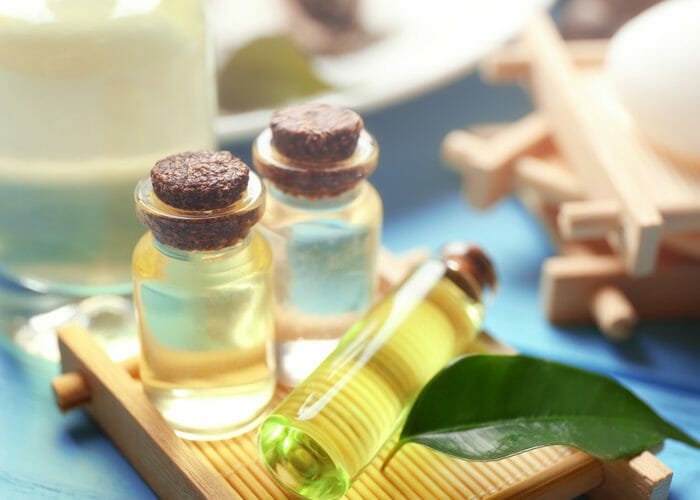
Tea tree oil can be found at almost any drugstore or shopping center. You can probably even find a bottle in your local grocery store. Basically, where to buy tea tree oil is up to you.
Some things you should look for when buying tea tree oil:
- A Dark Glass Jar –The darker the bottle, the more protection it provides the oil. When light creeps in through the bottle, it reduces the integrity of the oil.
- Organic Brands – If you plan on using tea tree oil for skin, look for organic brands. They will be your best bet for finding the most sterile oil. If you use the oil on your skin, make sure it has a high purity content. The higher the purity, the more sterile the tea tree oil is. The bottle should say 100% certified organic.
- Therapeutic Grade Labels – Along with organic, you should look for tea tree oil that is labeled therapeutic grade. That means it has been through rigorous safety and health testing and it meets all standards. You will also know that the oil you bought is all-natural and free from any other chemicals or fillers.
- The Source – Does the tea tree oil come from Australia? Since this is the origin of all tea tree oil plants, Australian tea tree oil is going to be the highest quality.
You can certainly find lots of reviews for products available for purchase online as well. Read the feedback for each brand and see which one fits your lifestyle the most.
How to Dilute Pure Tea Tree Oil
If you want to know how to dilute tea tree oil, hold onto your hats! It’s so simple you’ll wonder why you didn’t do it sooner. Besides the recipes above, it’s important to realize there are some other ways to dilute pure tea tree oil for use.
First, use a base or carrier oil. These are oils that are used to dilute essential oils. They are called carrier oils simply because of the way they carry oils on your skin. If you try using pure tea tree oil directly onto your skin, they dissolve too fast to be effective. As an example, here are some carrier oils to try:
- Coconut oil
- Olive oil
- Sesame oil
- Avocado oil
- Castor oil
- Sunflower oil
- Cocoa butter
Mix tea tree oil with other oils
What is tea tree oil best mixed with? Certain combinations of oils have special efficacy for skin, nails, or hair. Here are some examples:
- You can mix tea tree oil with oregano oil and coconut oil for toenail fungus. Use three drops each of tea tree oil and oregano oil. Mix in 10 drops of coconut oil. Apply this directly to your toenail.
- Add tea tree oil to shea butter and lavender oil for chicken pox or shingles. This will soothe the skin and prevent itching. Use three drops of tea tree oil, three drops of lavender oil, and one teaspoon of shea butter. Apply this mixture directly to the affected area.
Mix tea tree oil with water
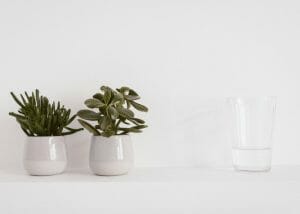
For effective acne treatment, a simple solution of tea tree oil and water will do the trick. Use 10-20 drops of tea tree oil for every 100 ml of distilled water. Shake it up and use it as a face rinse or put it on a spray bottle and mist your face with it. (Be careful not to get any in your eyes.)
Mix tea tree oil with vinegar
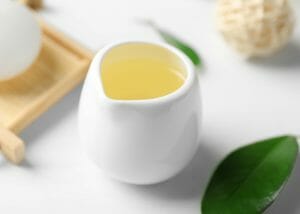
Making a solution of vinegar and tea tree oil will help you keep a sparkling clean kitchen and it will smell good too! Use 15-20 drops for every 100 ml of vinegar. This is the same ratio for mixing water with tea tree oil. You can use this mixture as an all-purpose cleaning solution.
Mix tea tree oil with honey
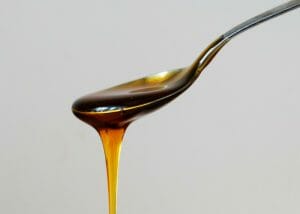
Another good way to treat acne, diminish scars, and heal wounds is a tea tree oil and honey combination. Use raw, local honey for the best results. Use two or three drops of tea tree oil for every teaspoon of honey.
Tea Tree Oil Side Effects
Tea tree oil side effects are mainly common sense. On the other hand, if this is your first peek into tea tree oil research, you may certainly want to read on.
- First, and most importantly, never ingest tea tree oil directly. Although tea tree oil benefits are innumerable, you should never swallow the oil. It is toxic and can be harmful.
- If you’re pregnant, absolutely never try anything new until you’ve discussed it with your doctor.
- Even though it carries a pleasant herbal scent, explicitly avoid putting it near your nostrils. You don’t want tea tree oil going up your nose. Also, be sure to keep the oil away from your eyes.
- Tea tree oil has a cooling sensation like aloe or menthol. Using too much may make your skin feel like it is burning, so use pure tea tree oil in moderation.
- No matter your stage in life, you are never too old to develop an allergy. Always test a small patch of skin before applying tea tree oil to a large area. Dab some on your ankle or the inside of your elbow. Never test any product on your neck or face.
- Additionally, when you use tea tree oil on your skin, always use a 5-10% concentration. Anything higher is more likely to cause adverse skin reactions.
In general, tea tree oil is very safe when you are using it for aromatherapy or topically.
Start Harnessing These Tea Tree Oil Benefits for Yourself
So, what is tea tree oil good for? Pretty much everything!
Above all, tea tree oil has countless benefits for skin, nails, and hair. It can prevent and cure so many ailments. By the same token, it can also clean your house right up and make it smell delightful.
To summarize, this oil is one of the best all-natural remedies, and it can be found in almost any store you visit. Regardless of where you buy tea tree oil, or what you use it for, it will prove to be beneficial.
Read Also: Philosophy Miracle Worker Review – Get The Facts!

